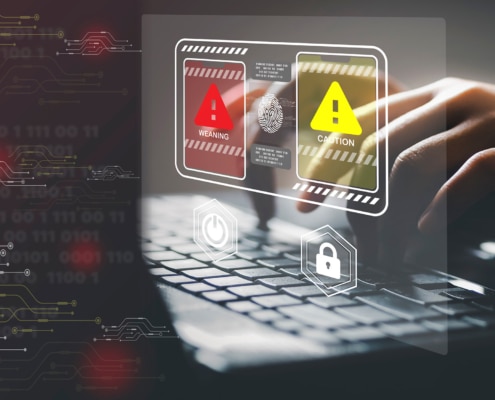 https://www.teamburkhart.com/wp-content/uploads/2024/09/Side-view-of-two-engineers-in-server-room.jpg
1250
2000
Abstrakt Marketing
/wp-content/uploads/2023/05/TeamBurkhart-logo-blackDIODIR_Horizontal-300x63.png
Abstrakt Marketing2024-09-17 16:09:572024-09-17 16:10:03What Is Attack Surface Management?
https://www.teamburkhart.com/wp-content/uploads/2024/09/Side-view-of-two-engineers-in-server-room.jpg
1250
2000
Abstrakt Marketing
/wp-content/uploads/2023/05/TeamBurkhart-logo-blackDIODIR_Horizontal-300x63.png
Abstrakt Marketing2024-09-17 16:09:572024-09-17 16:10:03What Is Attack Surface Management?How to Improve Your Network Security Following the NIST CSF 2.0 Cybersecurity Framework
An effective and resilient network security system is no longer a luxury but a crucial business requirement. Given the increased complexity of cyber threats, business operators constantly seek ways to improve and reinforce their security measures. This article introduces the recently released NIST CSF 2.0 Cybersecurity Framework, a comprehensive guide designed to enhance an organization’s cybersecurity strategy. This tool highlights network security essentials and outlines how its six core functions can fortify your network security together.
Understanding the Importance of Network Security
Before jumping straight into the NIST CSF 2.0 cybersecurity framework, let’s first explore network security:
Introduction to Network Security
Network security is a critical part of any business’s infrastructure. It means using physical and software methods to keep data safe and protect the network from attacks or unauthorized access. As cyber threats become more sophisticated, the importance of robust network security measures cannot be overstated.
The Role of Network Security in Today’s Digital Ecosystem
Today’s digital ecosystem is vast, interconnected, and integral to business operations worldwide. Network security ensures business continuity, protects customer data, and maintains the overall trust in an organization’s brand. Failure in network security can lead to devastating financial and reputational damage.
Network security plays a crucial role in compliance with regulatory requirements, safeguarding sensitive information against breaches. Strong network security is crucial for protecting a business from cyber threats and is essential for modern-day operations.
An Overview of the NIST CSF 2.0 Cybersecurity Framework
Now, let’s gain a better understanding of NIST CSF 2.0 by looking at some of its critical elements:
Explaining the NIST CSF 2.0: Key Features and Components
The NIST Cybersecurity Framework 2.0 (CSF 2.0) is an updated guideline the National Institute of Standards and Technology provides to help organizations understand, manage, and reduce cybersecurity risks. The voluntary framework comprises standards, policies, and best practices to manage cybersecurity-related risk.
NIST CSF 2.0 enhances the previous version by introducing a sixth function, Govern, alongside Identify, Protect, Detect, Respond, and Recover. These core functions provide a strategic view of the lifecycle of an organization’s cybersecurity risk management and emphasize the importance of governance in cybersecurity. Let’s break down how each component contributes to a solid foundation for network security:
- Identify – Develop an organizational understanding of managing cybersecurity risk.
- Protect – Implement appropriate safeguards to ensure critical infrastructure service delivery.
- Detect – Define the appropriate activities to identify cybersecurity events early.
- Respond – Outline actions regarding a detected cybersecurity incident.
- Recover – Identify necessary steps to maintain plans for resilience and restore any capabilities or services impaired by a cybersecurity incident.
- Govern – Incorporate a focus on governance and risk management at a high level, ensuring alignment with business priorities.
The integration of these functions facilitates a comprehensive and adaptable approach toward reducing risks and enhancing an organization’s cybersecurity posture.
Want to take a more in-depth look at the six core functions of NIST CSF 2.0?
Benefits of Using the NIST CSF 2.0 as a Network and Cybersecurity Framework
Adopting the NIST CSF 2.0 offers numerous benefits to organizations. It provides a common language for understanding, managing, and expressing cybersecurity risk to internal and external stakeholders. Furthermore, it helps align cybersecurity practices with business requirements, risk tolerances, and resources.
The framework’s flexibility allows businesses of any size to adapt it according to their specific needs, risk landscape, and the nature of their critical infrastructure. Its adoption enhances an organization’s security posture and supports compliance with existing legal and regulatory requirements, thereby mitigating penalties for non-compliance.
Implementing the NIST CSF 2.0: Considerations for Businesses
When adopting the NIST CSF 2.0, businesses should conduct a thorough assessment to identify their current security posture and areas for improvement. Setting clear objectives and measuring progress over time are crucial steps in leveraging the framework successfully.
Collaboration across departments, from IT to executive leadership, ensures a unified approach to implementing the framework. This alignment is essential for embedding cybersecurity considerations into the organization’s strategic planning processes.
Risk Management
Risk management is at the core of the NIST CSF 2.0. Organizations can allocate resources efficiently to mitigate potential threats by identifying, analyzing, and prioritizing risks. A proactive approach to risk management, supported by the framework, empowers businesses to respond rapidly and effectively to evolving cyber threats.
Incident Response
Developing a comprehensive incident response plan is vital. The NIST CSF 2.0 provides guidance on identifying responsibilities in cybersecurity incidents and promoting collaboration to minimize impact. This framework helps organizations determine roles and responsibilities during a cyber attack. It emphasizes the importance of swift teamwork to mitigate potential harm. By following the NIST CSF 2.0, organizations can effectively respond to cybersecurity incidents.
Access Control
Effectively managing resource access is fundamental to protecting an organization’s critical infrastructure. The NIST CSF 2.0 emphasizes the necessity of implementing strict access control measures, including user authentication and authorization protocols for endpoints.
Threat Detection and Monitoring
The Detect function promptly implements the appropriate processes and systems to identify cybersecurity events. Continuous monitoring and detection efforts are essential for early threat identification and mitigation.
Vulnerability Management
A systematic approach to identifying, evaluating, treating, and reporting security vulnerabilities in systems and the software that runs on them is crucial. Regular vulnerability assessments and remediation processes are recommended in the NIST CSF 2.0.
Network Segmentation
Splitting a network into smaller, manageable segments can significantly enhance security by limiting the spread of cyberattacks within an organization. The NIST CSF 2.0 advocates for network segmentation as a technique to improve the management of access controls and monitoring.
Security Awareness Training
People are often considered the weakest link in the cybersecurity chain. Regular security awareness training for employees reinforces the importance of security practices and equips them with the knowledge to prevent potential breaches.
Patch Management
Ensuring that software and systems are up-to-date is crucial. The NIST CSF 2.0 underscores the importance of a disciplined approach to patch management, reducing the exploitation of vulnerabilities.
Encryption
Data encryption, both at rest and in transit, adds a critical layer of security. The CSF encourages encryption as a method to protect the confidentiality and integrity of data.
Supply Chain Security
Supply Chain Risk Management (SCRM) is highlighted within the framework, pointing towards the importance of securing and managing the risks associated with an organization’s supply
chain.
Network Resilience
Developing a resilient network that can sustain and quickly recover from disruptions is critical. Implementing the guidance within the NIST CSF 2.0 can significantly enhance network resilience.
Regulatory Compliance
While the NIST CSF 2.0 is voluntary, its adoption can aid organizations in meeting regulatory compliance related to cybersecurity, thereby avoiding potential fines and reputational damage.
Security Architecture Design
Designing a security architecture that aligns with the NIST CSF 2.0 significantly enhances the overall security posture of an organization. A well-structured cybersecurity framework design incorporates the principles of least privilege and defense-in-depth.
Identity and Access Management (IAM)
IAM is a critical component of any cybersecurity strategy. Effective IAM ensures that the right individuals access the right resources at the right times and for the right reasons, aligning with the Protect function of the NIST CSF 2.0.
Business Continuity Planning and Disaster Recovery
Finally, the NIST CSF 2.0 emphasizes the importance of robust business continuity and disaster recovery plans. These plans are vital because they ensure that an organization can continue to operate in the face of cyber threats and recover quickly from any disruption.
Build Your Cybersecurity Framework Around NIST CSF 2.0 With Team Burkhart
At Team Burkhart, we excel in protecting our clients across the Midwest and beyond from cybersecurity threats. Our deep expertise in implementing NIST CSF 2.0 ensures your network security is fortified against evolving threats. Contact us today to discuss how we can help you improve your network security and provide a safer digital environment for your business.
Share This Post
More Like This
 https://www.teamburkhart.com/wp-content/uploads/2024/09/Side-view-of-two-engineers-in-server-room.jpg
1250
2000
Abstrakt Marketing
/wp-content/uploads/2023/05/TeamBurkhart-logo-blackDIODIR_Horizontal-300x63.png
Abstrakt Marketing2024-09-17 16:09:572024-09-17 16:10:03What Is Attack Surface Management?
https://www.teamburkhart.com/wp-content/uploads/2024/09/Side-view-of-two-engineers-in-server-room.jpg
1250
2000
Abstrakt Marketing
/wp-content/uploads/2023/05/TeamBurkhart-logo-blackDIODIR_Horizontal-300x63.png
Abstrakt Marketing2024-09-17 16:09:572024-09-17 16:10:03What Is Attack Surface Management?
Everything Business Owners Should Know About Cyber Liability Insurance
Cybersecurity
How Cyber Insurance Works to Protect Your Business
Cybersecurity
What Is Cyber Liability Insurance?
Cybersecurity
Cyber Compliance Checklist: The Ultimate Guide to Cyber Liability Insurance
Cybersecurity https://www.teamburkhart.com/wp-content/uploads/2023/11/Top-Cybersecurity-Threats-of-2023.jpg
1250
2000
Abstrakt Marketing
/wp-content/uploads/2023/05/TeamBurkhart-logo-blackDIODIR_Horizontal-300x63.png
Abstrakt Marketing2024-07-01 09:00:002024-07-15 23:47:58Top Cybersecurity Threats of 2024
https://www.teamburkhart.com/wp-content/uploads/2023/11/Top-Cybersecurity-Threats-of-2023.jpg
1250
2000
Abstrakt Marketing
/wp-content/uploads/2023/05/TeamBurkhart-logo-blackDIODIR_Horizontal-300x63.png
Abstrakt Marketing2024-07-01 09:00:002024-07-15 23:47:58Top Cybersecurity Threats of 2024
Protecting Personal Information: A Guide for Businesses
Cybersecurity
How to Safely Embrace AI in Your Business Operations
Cybersecurity
How to Elevate Your Cybersecurity Awareness Training
Cybersecurity
Wherever innovation thrives, we’ll be there.
